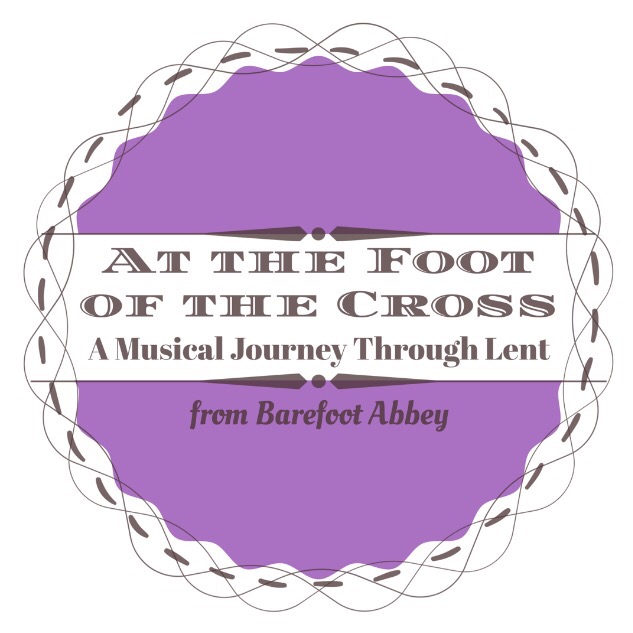
I’m so glad you have joined us on this Forth Friday in Lent. It’s hard to believe that we are now official half-way through the season! It is sailing by for out family and I need to stay on top of things. I hope this devotion and any other disciplines your family has taken on this year are proving to be fruitful for y’all.
If you are new to this devotion: Hello! Welcome! Please don’t hesitate to jump right in with today’s two listenings and music appreciation lesson. All the weeks are independent of each other so there is no added pressure to immediately catch up on previously missed weeks. You can find more ideas for participating in this Lenten devotion at the Overview post.
For your family’s free listening pleasure, here is the whole work:
Dvořák’s Stabat Mater
Should you chose to add more free listening to your week, The Story of Dvořák, including his narrated biography over specific works, can be found in the playlist below:
Week 4
4. “Fac, Ut Ardeat Cor Meum” – Bass Solo and Chorus
Latin Text:
Fac, ut ardeat cor meum
in amando Christum Deum
ut sibi complaceam.
Sancta Mater, istud agas,
crucifixi fige plagas
cordi meo valide.
English Translation:
Make me feel as thou hast felt;
make my soul to glow and melt
with the love of Christ my Lord.
Holy Mother! pierce me through,
in my heart each wound renew
of my Savior crucified:
5. “Tui Nati Vulnerati” – Chorus
Latin Text:
Tui Nati vulnerati,
tam dignati pro me pati,
poenas mecum divide.
English Translation:
Let me share with thee His pain,
who for all my sins was slain,
who for me in torments died.
For our lessons this Lent, we will be using our family’s easy ABC method for listening with purpose. It is a simple three step process that can be used with the whole family and all ages. Your family will be listening to the piece with purpose at least once with specific actions in mind. The whole lesson typically takes around 15 minutes to complete if you include all three steps. It can be expanded based on length of pieces and the extent of conversation. This method is intentionally adaptable to fit all families in hopes that it will aid in fostering a love of music and meaningful connections in your home. Read through the lesson beforehand, then pull out and use what you know will work with your child(ren). Don’t be afraid to include the youngest of children too! My 1 year old daughter and goddaughter just dances around while listening and that is perfect!
Our Easy ABCs for Music Appreciation
Begin by gathering everyone together for your family listening time. Our family reads the text and translation then participates in the lesson.
If you have any questions please don’t hesitate to leave a comment. I want these lessons to be as user friendly as possible!
You can share what you like from the following or use it as an easy script:
Our music lesson today will focus on the second of our two pieces for this week, “Tui Nati Vulnerati”. This 5th Movement of Stabat Mater is a chorus like last week, with no solo voices. Its ABA form contrasts an upbeat, joyful first section and a more penitential second section. With its 6/8 time signature, the first section of the piece is similar to the water music sung by gondoliers of Venice, Italy called Barcaroles. The 6 beats per measure gently rock you back and forth while still continuing the forward motion of the piece. The changing dynamics (how the notes are sung, volume and articulation) of the vocal lines are also reminiscent of the sweeping, gentle pull of waves. In spite of the text it is a nice splash of cheerfulness as we approach Laetare Sunday.
Now onto the main processes of our Listening ABCs.
A – Attentive Listening
Before you play the piece for the first time, ask your family to close their eyes and listen silently. Ask them to try and get a feeling, picture, or story in their mind of what the music reminds them of. They may remember some of the text translation read earlier. We really want them to get their imaginations running for this first listening. Ask them to share what they saw in the music. There is no right or wrong answer.
B – Bodily Movement
Now we’re going to add a bodily movement to help our brains connect our memory and the music. Your family may listen to the piece a second time here while gracefully rocking side to side during the A sections of the piece. You may incorporate counting the 6 beats in each measure as everyone sways if both activities fit the ability of your children. Students may also draw what they hear in the music. If drawing is chosen, the picture may be whatever the children imagines, however detailed or abstract.
C – Conversation
This concluding segment is where we talk about the elements we hear in the music. Each time your family listens with purpose using these ABCs, they will hear and be able to verbalize more and more. Any observation is welcome and should be praised during this listening. In this section you may choose to have your family listen to the piece one last time while pointing out the elements of the music they recognize. Your family may also go straight on to the discussion. Can anyone share differences between the A and B portions of the music? The mood of the piece can also be discussed here by asking how the music made your family feel and sharing your own response. For comparison, you can also share the video below of a famous barcarole, “Belle nuit, ô nuit d’amour”, from Offenbach’s opera Les Contes d’Hoffmann (The Tales of Hoffmann).

